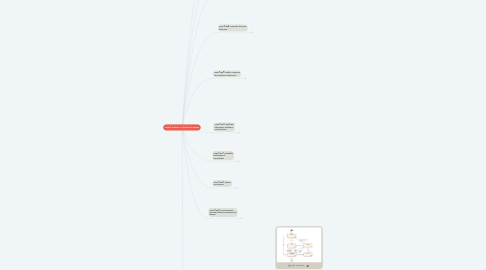SWE.2 Software Architectural Design
作者:Ram Kumar


1. SWE.2.BP9: Communicate agreed software architectural design
1.1. Communicate the SWAD to all stakeholders
1.2. Deliverables: Communication record
2. SWE.2.BP8: Ensure consistency
2.1. Traceability between Software Requirements and Software AD
2.2. Review of Software AD
2.3. Deliverables: Software Architecture Design, Review record and Traceability record
3. SWE.2.BP7: Establish bidirectional traceability.
3.1. Traceability between Software Requirements and Software AD
3.2. Deliverables: Software Architecture Design, Review record and Traceability record
4. SWE.2.BP5: Define resource consumption objectives
4.1. Define the Resource Consumption Goals - RAM/ROM/EEPROM usage should not be more than 75%. Considering scenario where Software is outsourced, suppliers should define RC Goal for each Milestone considering the SWC and Features to be delivered
4.2. Outcomes: Software Architecture Design
5. SWE.2.BP4: Describe dynamic behavior.
5.1. Define the Dynamic behavior of the Software components i.e how the Software components behaves with different inputs and outputs - For ex: Operating modes - Startup, Sleep , Wakeup State - Recommended to have State Transition Diagram and Sequence diagram for tasks and Scheduler
5.2. Outcomes: Software Architecture Design
6. SWE.2.BP6: Evaluate alternative software architectures
6.1. Perform Alternate Evaluation of SWAD considering quality (maintainability, reliability and security) , cost and time and choose one design - One example is the Micro controller that we choose for the project considering the Resource consumption.
6.2. Deliverables: Software Architecture Design, Review record
7. SWE.2.BP3: Define interfaces of software elements
7.1. Develop Software Architecture Design - Interfaces between Software components - Block diagram of Component level Interfaces, Scheduler, Task Name, Sender Signal Component, Sender Signal Name, Receiver Signal Name, Receiver Signal Component, Receiver Signal Task Name.
7.2. Outcomes: Interface Requirements Specification
8. SWE.2.BP2: Allocate software requirements
8.1. Define a unique naming convention for each of the Software components identified in AD and map it to the respective Software Requirements. This can also be done by Traceability
8.2. Outcomes: Software Architecture Design
9. SWE.2.BP1: Develop software architectural design
9.1. Develop Software Architecture Design - Interfaces between Software components - Block diagram of Component level Interfaces, Scheduler, Task Name, Sender Signal Component, Sender Signal Name, Receiver Signal Name, Receiver Signal Component, Receiver Signal Task Name.
9.2. Outcomes: Software Architecture Design
10. The purpose of the Software Architectural Design Process is to establish an architectural design and to identify which software requirements are to be allocated to which elements of the software, and to evaluate the software architectural design against defined criteria.
10.1. Sample Work Products
10.1.1. State Transition
10.1.2. Sequence Diagram
10.1.3. Alternate Assessment of Design
10.1.4. Resource Consumption
